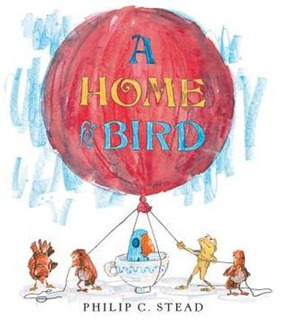
Julia’s House Moves On by Ben Hatke (9781250191373)
This sequel to Julia’s House for Lost Creatures carries readers back to the marvels of the Julia’s unusual house and the creatures she shares it with. Julia’s house was getting restless and all of the different creatures who lived there could feel it and started to act out too. Luckily, Julia had a plan for moving them, she even knew just the spot in the mountains for them. But then, the turtle whose back carried the house decided to move right then, down into the ocean. Now the house was tattered and barely afloat. Julia though had a plan filled with paddling and pushing but the house sunk faster and sharks were circling. She went to her other plan, and blew on Triton’s Horn but that didn’t work out either. With her house sinking, the creatures floated off away from Julia. All was lost. Or perhaps they had their own plan!
Written just for compulsive planners like myself, this picture book is funny and full of dynamic moments. Hatke, the creator of graphic novels like Zita the Spacegirl, is just as at home in the picture book format. His pacing is brisk, never letting poor Julia linger for long in her new spot of trouble. Julia’s plans are feats in themselves, constantly figuring out what to do, and show real resilience in dire situations.
As with all of Hatke’s art, he creates characters who are fascinating, friendly and full of life. Here he gets to delve into all sorts of strange creatures too who liven up the story. His illustrations are worth lingering over, with small touches that make Julia’s house come alive (literally).
Perhaps the perfect COVID fantasy read that shows how communities can work to save one another. Appropriate for ages 4-6.
Reviewed from e-galley provided by First Second.







